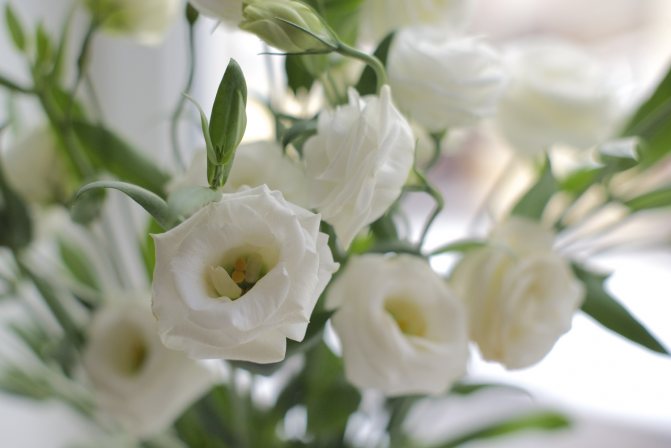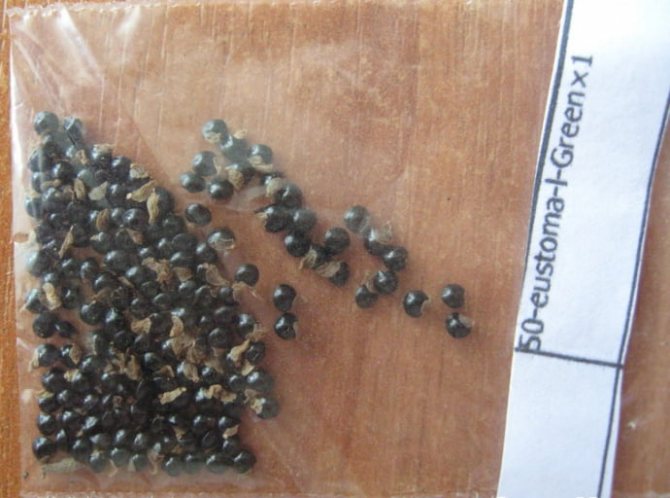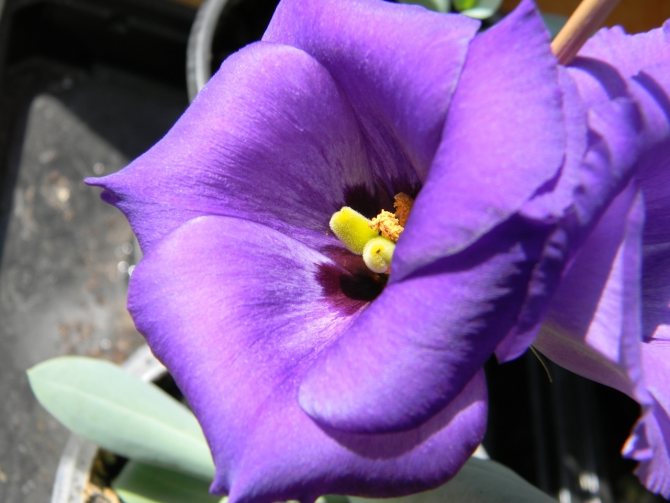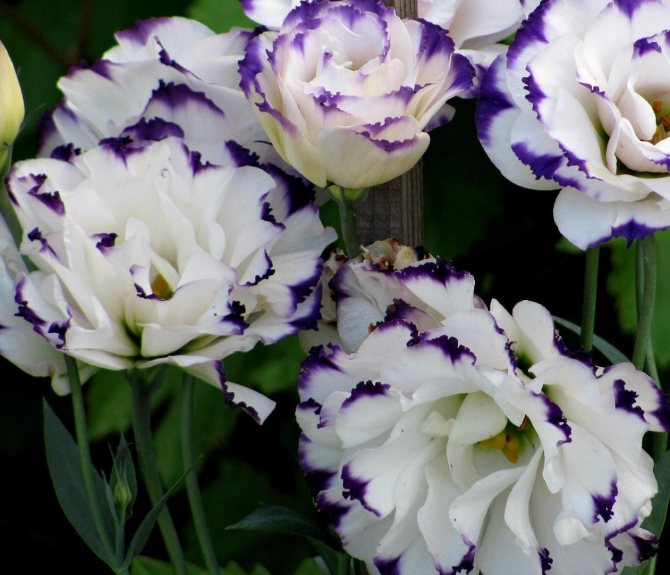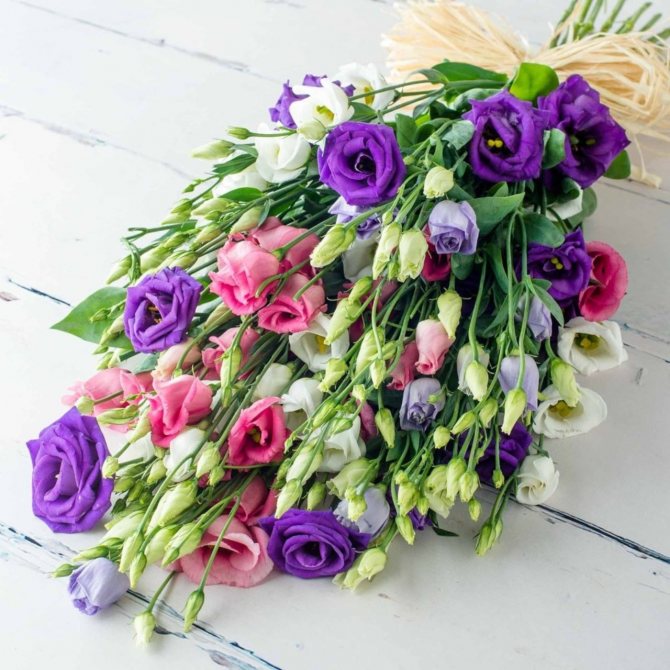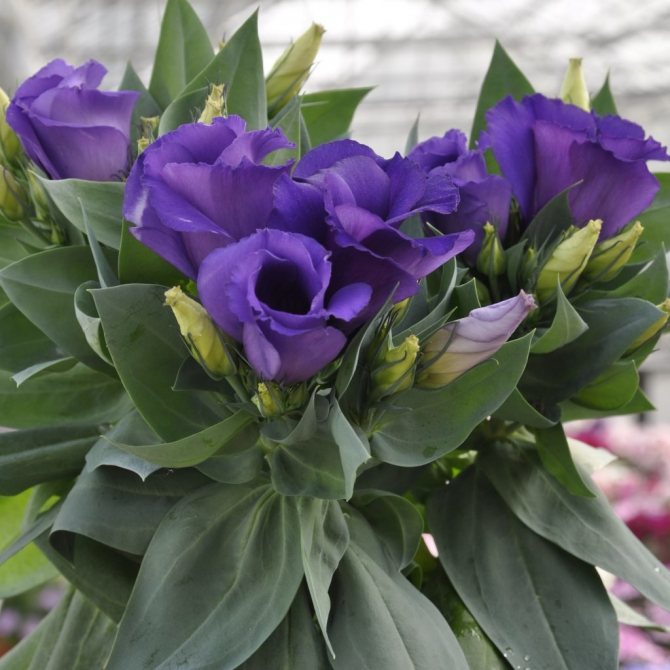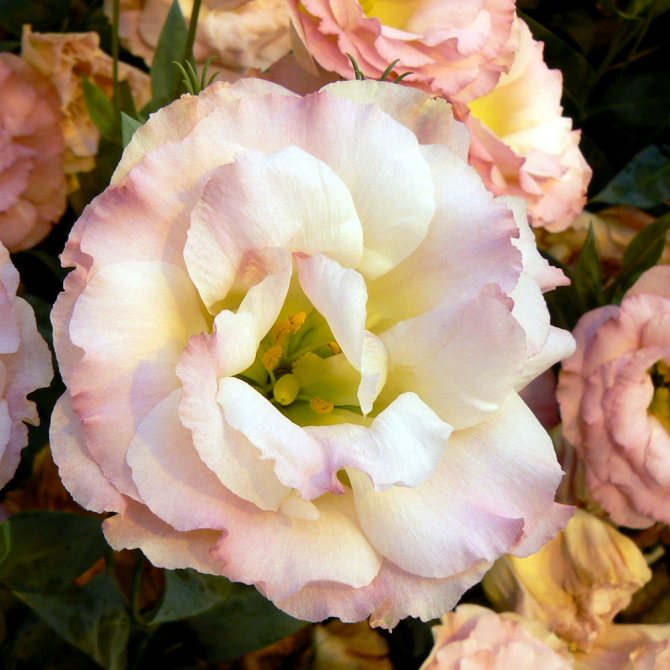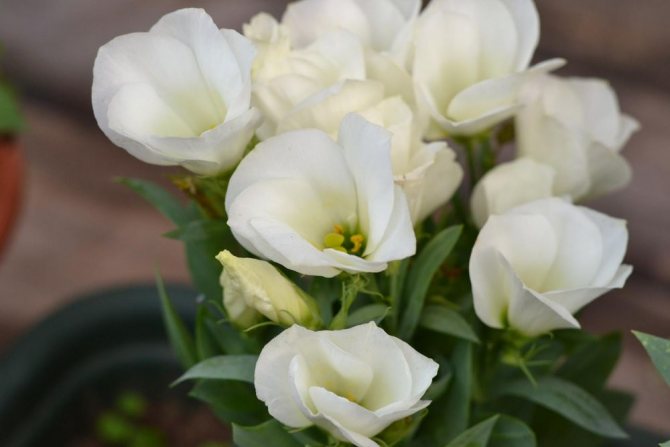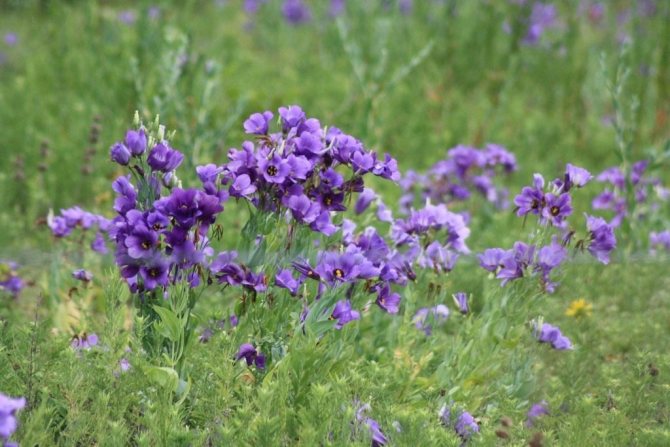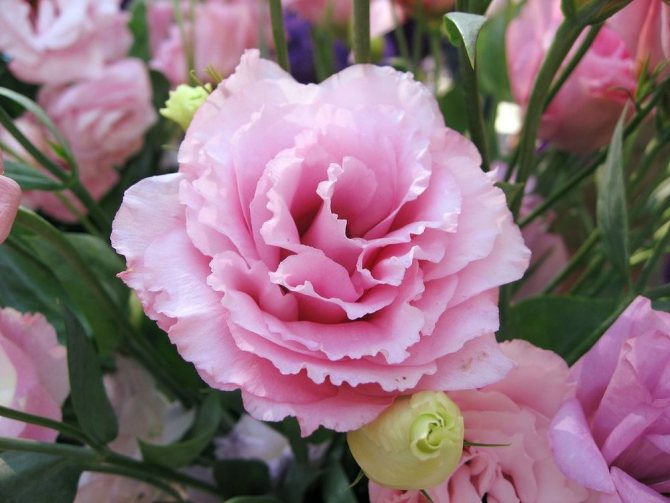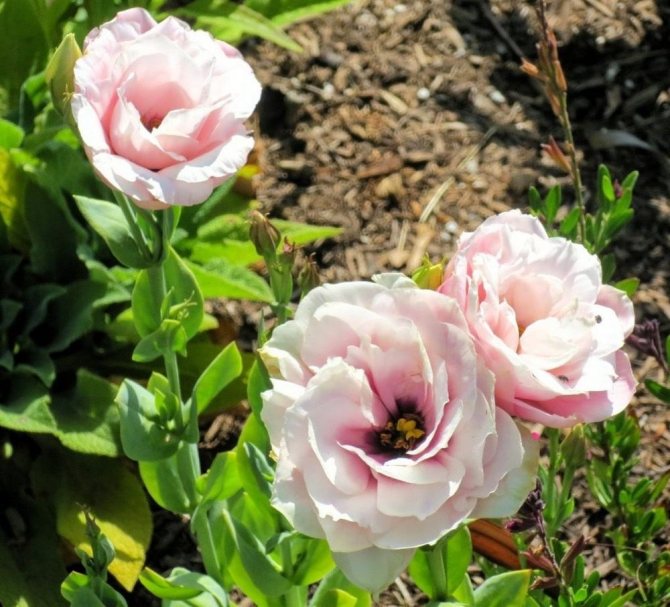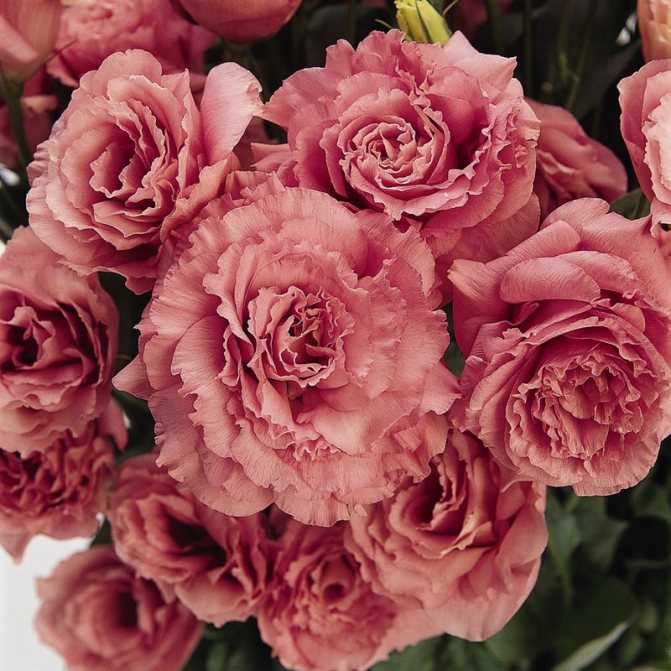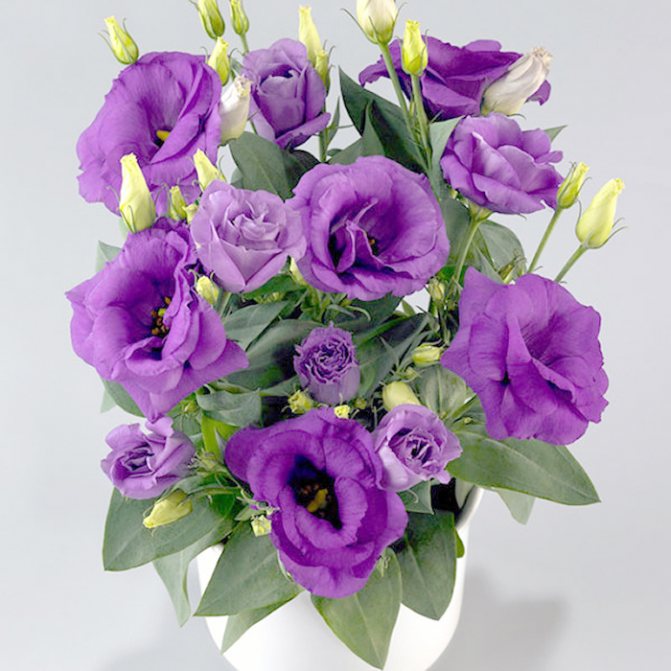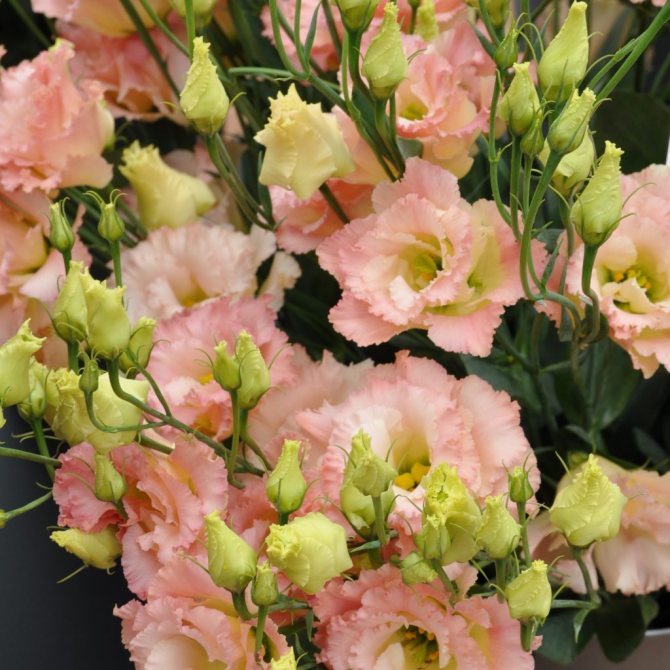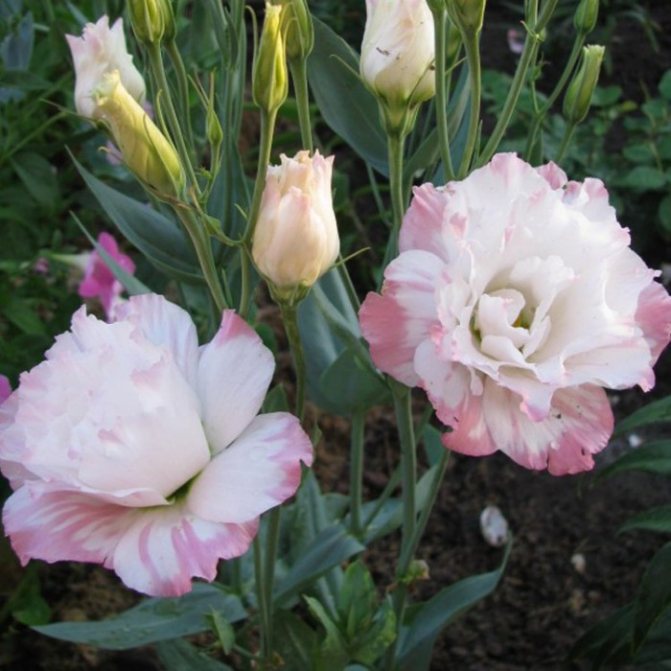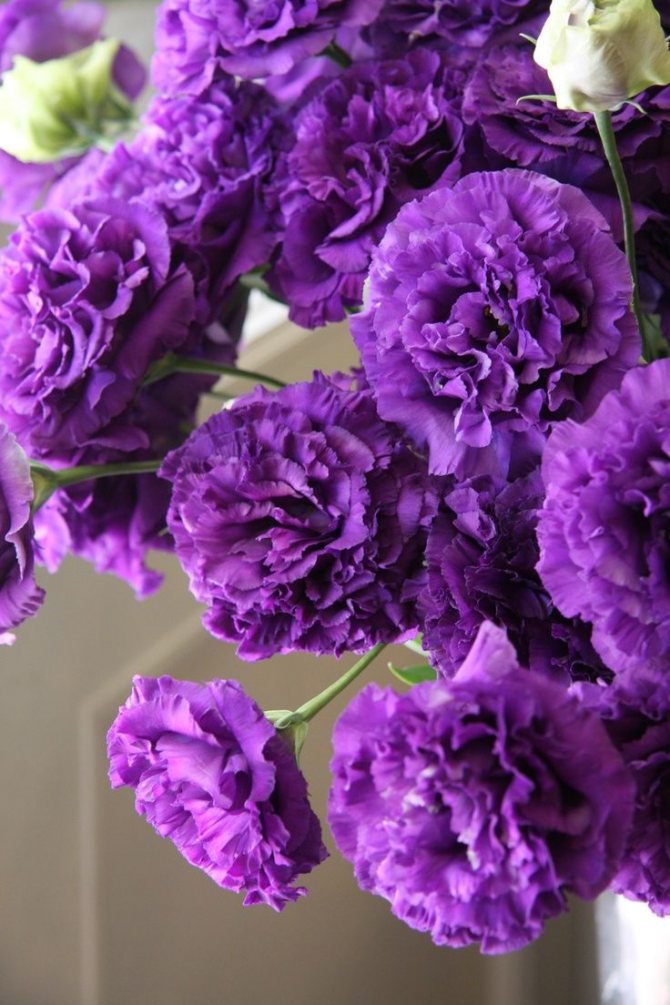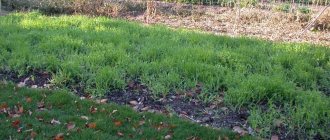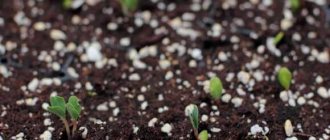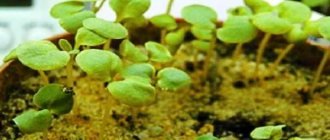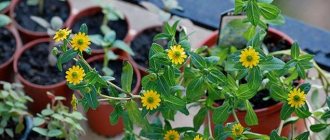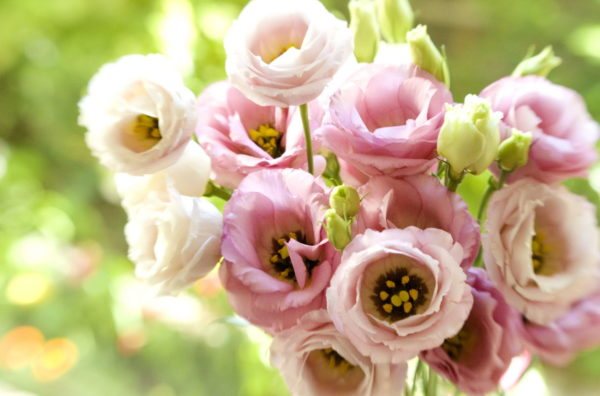
Eustoma is gaining immense popularity among garden owners. Its cultivation is possible only from seeds that germinate and slowly reach impressive sizes. It takes six months to bloom after germination. In this regard, it is best to sow a flower during the period from February to March. Gardeners who love eustoma, although know how to grow a flower from seed at home, as well as how and when exactly you can sow. In addition, it is important to know how to properly care for the plant.
- 2 Rules for growing eustoma seedlings from seeds
- 3 What time is it necessary to plant eustoma for seedlings
- 4 How to sow seeds to obtain seedlings
- 5 Proper care of flower seedlings
- 6 Growing in the garden
Cultivation of eustoma seedlings from seeds
Growing a flower from a seed is a painstaking process and not everyone knows how or when to sow. Inexperienced gardeners and flower lovers may encounter upsetting moments of this activity, for example, prolonged growth or the absence of seedlings in general. Usually, slow germination is observed when the technical equipment with which the sowing was carried out improperly, or poor quality seeds were used.
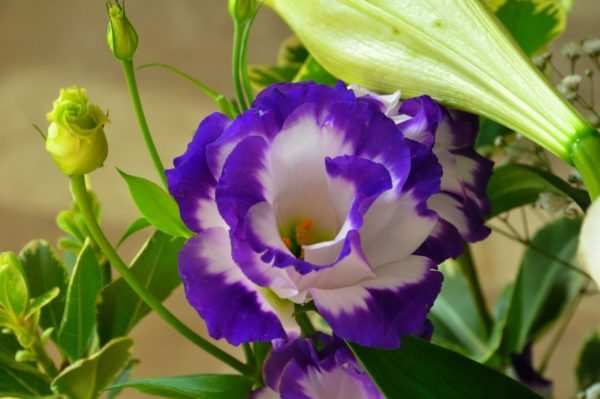

Advice!
There is no need to give up at the initial stage and get upset in case of poor results. It is necessary to think over your actions and repeat the sowing work, taking into account the errors found. You need to buy seeds only in designated stores.
Rules for growing eustoma seedlings from seeds
To get seedlings of an eustoma flower for further planting in a garden plot, cultivation from seeds at home must be carried out from February to March. They should bloom between July and August.
Advice!
In order for the plant to bloom in the winter, sowing must be carried out from July to September.
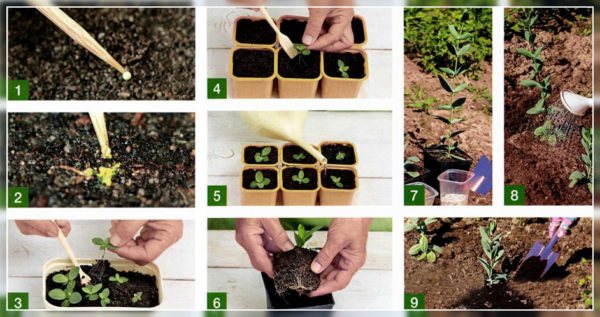

Many people wonder why it is necessary to grow seedlings first, and then the flower itself.
As for eustoma, growing it from seeds at home and then obtaining a plant is necessary for several reasons. The main reasons are:
- growing by dividing the root system will not happen;
- the flower is very fond of moisture and warmth, therefore it grows well at home, after which it goes to garden plots already in a strong state.
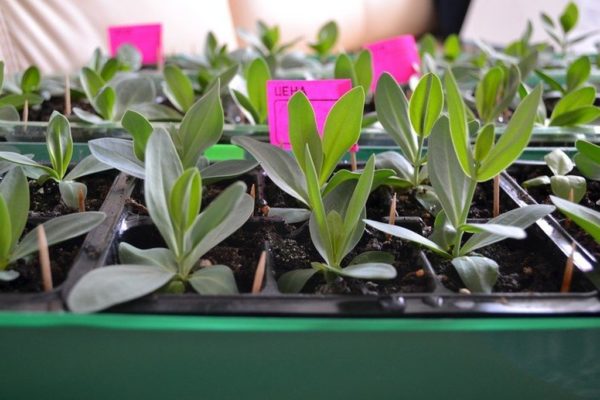

Sowing can be done:
- in a large container for several seeds;
- in a separate vessel for each seed;
- in peat "tablets" for seedlings.
It is not necessary to carry out pre-sowing treatment at home before sowing.
Eustoma in the plant kingdom
Also known as Lisianthus, eustoma in botany is distinguished into a separate genus of the same name belonging to the Gentian family. The homeland of this plant is considered to be the south of North America, the countries of Latin America and the adjacent islands. However, the name "Lisianthus" is outdated, literal translation from Latin means "bitter flower". In common parlance, it is called the Irish rose, the Texas bell.
In the language of flowers, Eustoma means gratitude for peace and prosperity, a wish for happiness and longevity.
In fact, Eustoma has nothing to do with a rose, except for a slight resemblance of half-open buds.Otherwise, it is a completely different culture with a strong, highly branched erect stem, each branch of which is crowned with a large flower.
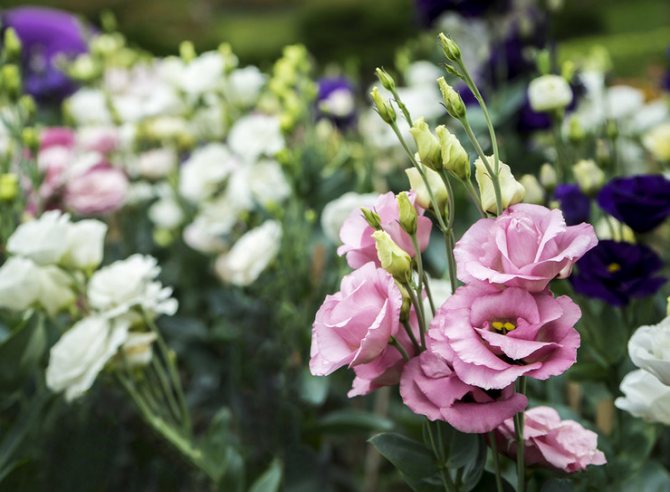

Eustoma is a beautiful and very attractive flower, a decoration for any garden!
Height ranges from 0.3 to 1.2 m. Leaves are lanceolate, regular, without petioles, sometimes with a bluish-whitish bloom. The flower petals are arranged in such a way that the neighboring ones overlap each other a little, as if in a spiral. Their color varies in different shades of blue, however, in breeding varieties, the color spectrum is practically unlimited.
Popular varietal series
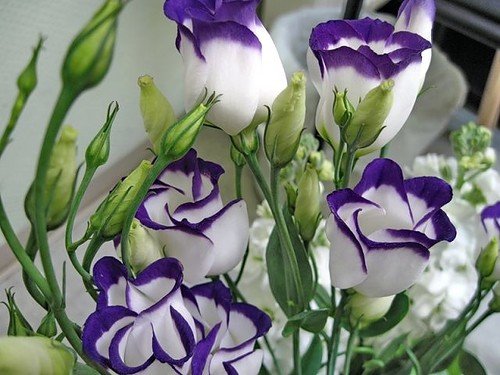

Indoor eustoma
Scientists know a lot of wild-growing representatives of the Eustoma genus, but only two species are of interest in culture:
- Eustoma Russell - popular as a houseplant;
- Large-flowered, from which the main breeding varieties were bred.
According to other data, these two species are combined into one - large-flowered, but this is not important for ordinary gardeners, since the decorativeness of plants does not depend on nomenclature misunderstandings. The wild lisianthus is a perennial, but in our latitudes its cultivated varieties are cultivated as annuals, less often biennials. Only as an indoor flower can you grow longer.
To date, breeders have bred a large number of varieties and hybrids of eustoma. The choice of flower growers is tall and low-growing plants, with double flowers and in the form of bells, monotonous and combined color, with early and late flowering.
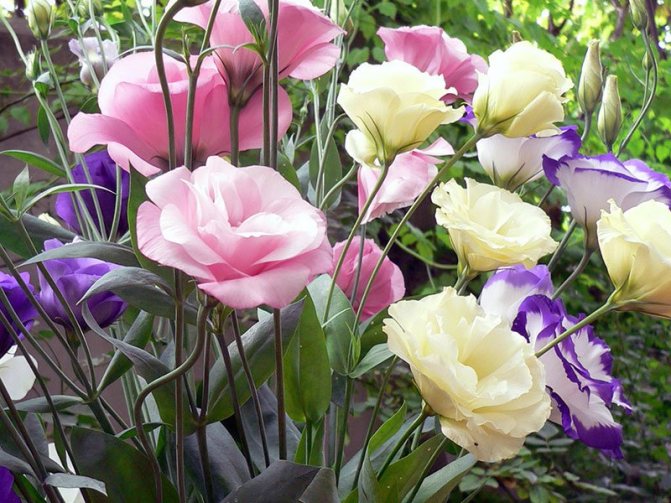

Large-flowered eustoma in the garden
You can't list everything, the variety is too large, so it makes sense to single out varietal series that include various hybrid forms:
| Varietal series name | Description |
| "Echo" | In this series, tall, about 0.7 m, plants with large double flowers. They are distinguished by the purity of the monotone color declared by Japanese manufacturers. They bloom early, in July, and bloom vigorously until September. |
| "ABC" | Very tall series (0.7-1.2 m), perfect for cutting. Terry flowers are large, up to 6 cm in diameter. Blossom by September. |
| "Kyoto" | Another early flowering, but not double series, growing up to 0.9 m. The hybrid forms of this series are grown in seedlings to get flowering in July. |
| "Madge" | Terry series with abundant cut flowering. Each peduncle has a large number of buds. Plant height - up to 1 m. |
| "Florida" | Potted form of Lisianthus, 25 cm high, mixed palette. The plant is compact, erect stems with a large number of inflorescences form a bouquet. The series is perfect for decorating loggias and balconies. |
| "The little Mermaid" | This is an even shorter and more compact eustoma, about 15 cm, intended for indoor conditions. At a low height, the flowers remain large, up to 6 cm.Lisianthus of this shape grows calmly, without the need for artificial limitation of growth. |
In addition to those indicated in the table, such series are known as Piccolo 2, Flamenco, Cinderella, Mariachi, Matador, Twinkies, Polestar.
Where do you prefer to grow lisianthus?
At home in the garden
What time is it necessary to plant eustoma for seedlings
The period when it is necessary to plant eustoma is influenced by the place in which the flower is grown from seeds at home. If the plant will grow in greenhouses, it doesn't matter when to sow the seeds. The only thing you need to pay attention to is to create a suitable environment for the correct growth of the flower in the greenhouse.
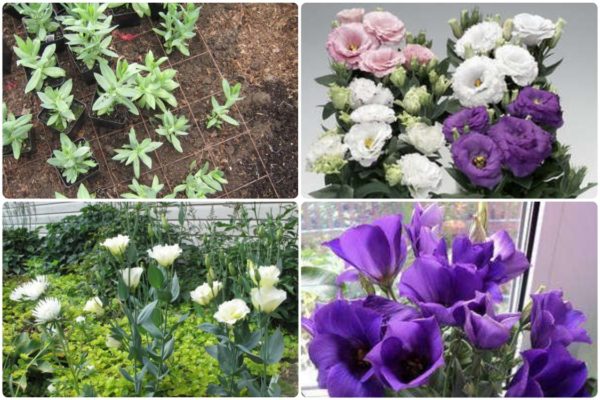

But not every gardener plans to plant under a tent, someone is interested in how and when to sow seeds for the further development of a plant in an open area of land. In this case, it is necessary to sow eustoma between the end of autumn and ending with the last winter month after growing from flower seeds at home.
Planting and care in the open field
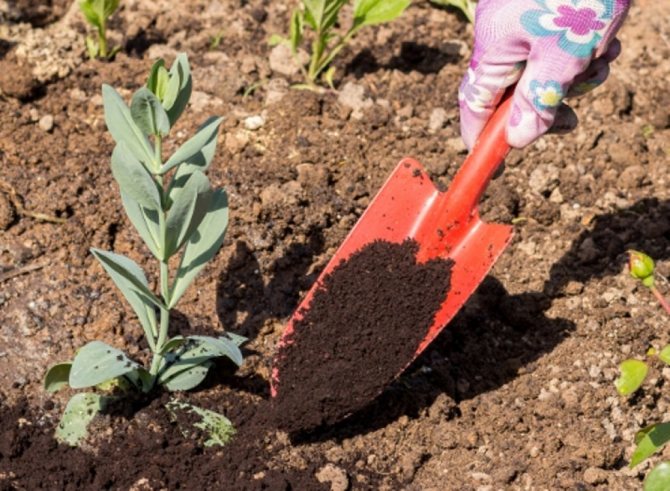

Transplanting an Irish rose into open ground is carried out after warm weather has established and the frost has passed. The seedlings are placed in the ground at a distance of 15-20 cm from each other.
Required growing conditions in the open field:
- Lighting and place. Plants are planted in secluded places with diffused lighting, protected from direct sunlight and drafts.
- Priming. The soil should be loose, neutral and rich in nutrients. An important condition is its air permeability and good water conductivity, since stagnant moisture is detrimental to eustoma.
- Pinching. After the appearance of 6-8 true leaves, it is necessary to pinch the top. This leads to the emergence of new shoots and promotes abundant flowering.
- Top dressing. During active growth, eustoma needs regular feeding. For this, nitrogen-containing fertilizers enriched with potassium are used.
The first experience of seed breeding of eustoma does not always have a positive result. But if you adhere to all the rules and observe all the nuances of the process, then the plant will soon delight you with its gorgeous flowering.
How to sow seeds to get seedlings
How to work with flower seeds is just as important a question as when to sow the sprouts.
In this case, the ideal composition of the earth will be a uniform combination of peat soil with humus from the bark of deciduous trees or coconut.
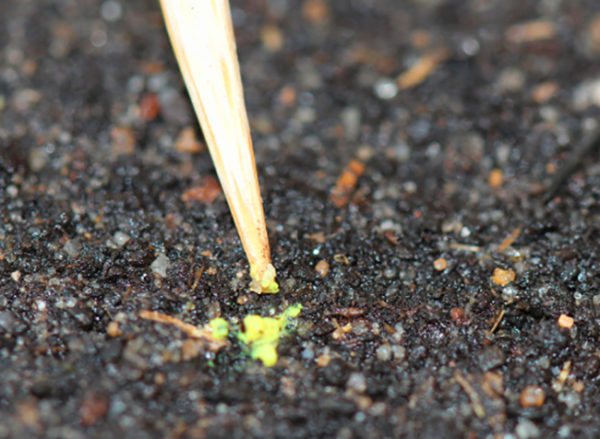

You can use purchased land, which is sold in flower shops and is pre-treated for future use. Peat tablets are also sold, which can also be used for seed germination. Before sowing, they must be soaked in water for a day.
The sowing process is the following sequence of actions:
- First, you need to moisten the soil to soften it.
- Spread the seeds over the surface of the soil, press them slightly to the ground. The distance between crops should not exceed 3 centimeters and be less than 2 centimeters.
- You can not cover the top with earth.
- To avoid flooding the seeds with water, water them with a fine spray nozzle.
- When the seeds are laid, they must be covered with foil and several holes made in them with a toothpick or a needle for intensive air movement.
- It is necessary to wait about two weeks before the first shoots appear.
- When the seeds grow, it is necessary to remove the film.
- To prevent the formation of fungus or rotting, you need to spray the plant with a solution of phytosporin.
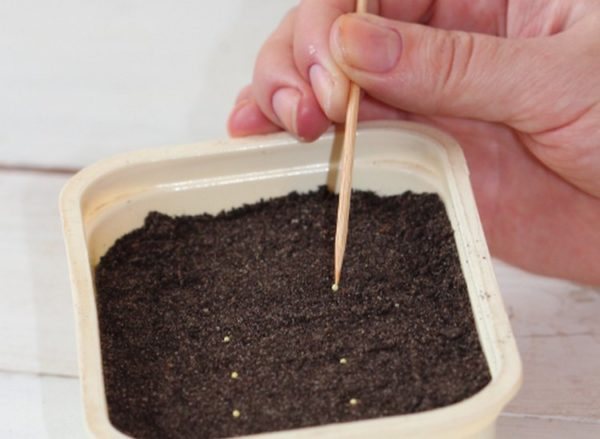

Successful germination is guaranteed by following these guidelines for handling eustoma and growing from seeds at home.
Eustoma sowing rules
I think it is unnecessary to say that we use only fresh seeds for planting in order to maximize germination. As for the company, then it is better to give preference to proven manufacturers.
But on the soil for seedlings, I will dwell in more detail. It should be light, neutral. From store substrates, soil for violets is well suited. You can make up the soil mixture yourself, for this, on all the same forums, it is advised to mix the following components:
- garden land;
- humus;
- fine bark;
- peat;
- sand;
- perlite.
Take all components in equal parts. But I did not dare to do so, and you may need a recipe.
For planting eustoma seeds for seedlings, it is better to choose shallow food containers or boxes with drainage holes. It is imperative to disinfect them, then fill it with a substrate, compact it, sprinkle it from a spray bottle, and then evenly distribute the seeds over the surface.
Attention! It is better to spread the pelleted seeds at a short distance from each other so that after germination they do not thin out the planting. Make an indent up to 1.5 cm.
You do not need to cover the seeds with soil from above.It is better to sprinkle with water from a spray bottle again so that the seeds are drawn into the soil on their own. Cover the container with a bag or lid, in my case it is a film, and put it in a warm place. For germination, eustoma seeds need at least + 20 ° C.
Since the seeds hatch well only in the light, which should shine up to 12 hours a day, then you will have to turn on the lamp. I don't have a lot of landings, so I got by with an ordinary table lamp that does not emit heat.
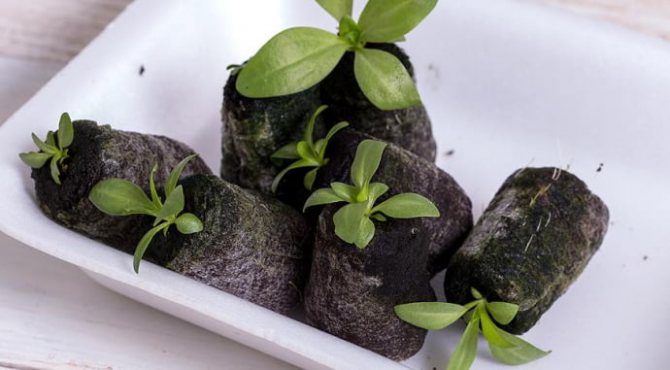

Sowing eustoma before winter
By the way, on the Internet, I found a way not to bother with eustoma seedlings, but to sow it directly into the ground. At the end of autumn, seeds are distributed directly on the garden bed, they are well insulated and left to winter. In the spring they will give strong shoots, all that remains is to plant them in a flower bed.
True, the flowering of such plants will begin only in the fall, if the frosts come early, then it will be short-lived.
I myself have not tested this method, so if you have experience with such cultivation, please share it in the comments. I really want to make my work easier, because I'm a lazy gardener!
Eustoma seedlings picking
I advise you to dive eustoma seedlings strictly after the appearance of 3-4 true leaves. The sprouts still seem fragile, but they have enough strength to endure the transplant, and in separate containers they will develop faster.
If you postpone the pick for several weeks, then as a result the earthen lump will be completely covered with roots, it will be difficult to divide it so as not to injure them. So do not regret, cut the sprouts in a timely manner, well, at least most, if you are really afraid of losing the seedlings.
Advice! The new container should not exceed 7 cm in diameter. The root collar after planting remains flush with the soil. It is not necessary to deepen it.
After the first pick, many gardeners make a mistake. They continue to grow seedlings in this state until they are planted in the ground. But this is not possible with all varieties of eustoma.
Tall plants will have to be cut down again when 5-6 pairs of leaves appear. A larger container will be required. Only undersized varieties that will decorate the pots or will be planted in a curb can be left alone.
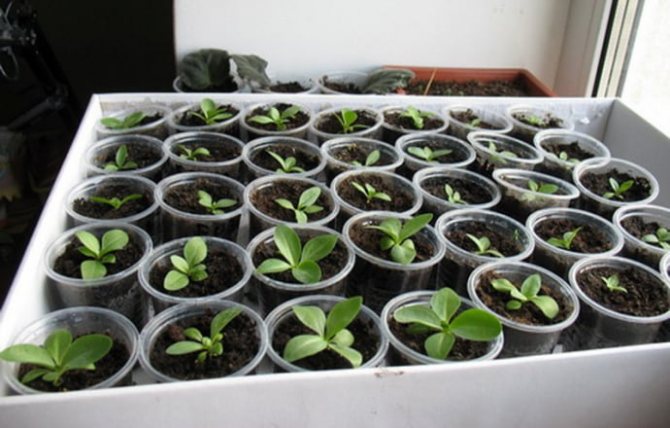

Proper care of flower seedlings
Initially, it is necessary to monitor the room temperature and proper lighting.
Temperature range:
- during the day it should be from 20 to 22 ° С;
- at night, the temperature should be lowered to a maximum of 14 ° C.
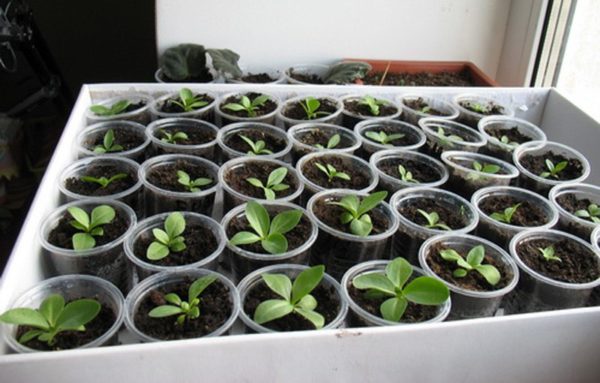

The right light allows you to activate all living processes. The plant should be in good light for 12 to 14 hours a day. An artificial light source is recommended.
Watering also affects the correct development of seedlings. It is necessary to monitor the regularity of soil moisture and avoid excess moisture. At the end of the day, the foliage should be practically dry. Waterlogging can provoke root rot, after which the flower sprouts may die.
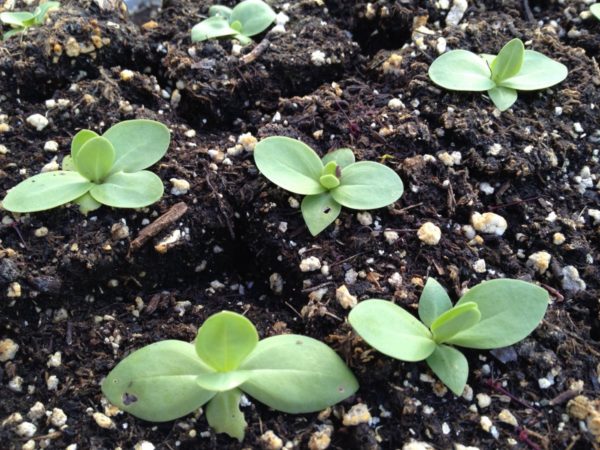

After one and a half or two months, the eustoma will grow to 4-5 centimeters. In this state, it should have 2-3 pairs of leaves. When this is achieved, it is necessary to transplant the germinated plant into personal vessels with a diameter of 5-6 centimeters. The soil is used the same as when sowing seeds.
Growing conditions
Eustoma cannot stand the cold. Even with a slight decrease in temperature, the condition of the flower deteriorates and it dries out. The immunity of Lisianthus also depends on the humidity in the room. Exceeding the permissible value provokes the development of fungal diseases.
For the successful cultivation of seedlings indoors, maintain the temperature during the day at least + 22 ° C. At night, this indicator may decrease to + 18 ° С. Only warm water is used for watering seedlings. Cold liquid reduces the immunity of seedlings and provokes the development of fungal infections.Air humidity should be moderate, from 50 to 60%. In winter, heating devices dry the air in the apartment. Then, to increase the humidity, containers with water are placed next to the seedling box or a household humidifier is used.
For the active development of seedlings, lighting is needed for 10 or more hours. Planting boxes and flower pots are placed on the south side of the house. But even there, in winter and early spring, there is not enough sunlight. To compensate for the deficit, phytolamps are installed and the plants are illuminated with them in the morning and evening. Lighting should be diffused. A screen is installed to protect against sunburn.
Growing in the garden
The transfer of seedlings is possible only after the end of the subzero temperature. Flowers should be located in a good place, where there are no direct rays of the sun, and a strong wind does not blow. It is necessary to monitor the moisture content of the soil and avoid waterlogging. It is better to water the soil once again than to fight the dampness.
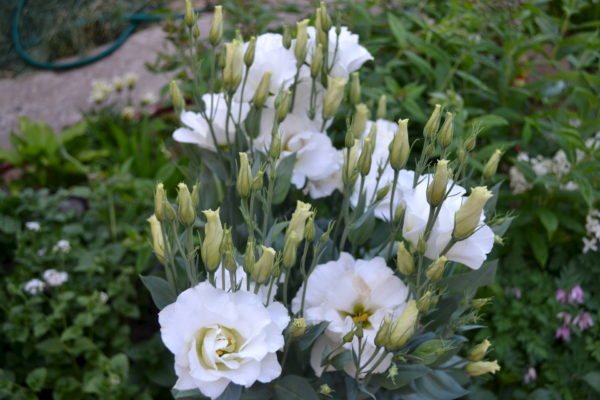

After the young seedlings have been planted on the site, it is necessary to cover each stem with a cut plastic bottle. It is important to replant with old soil from the container. With gentle movements, you need to pull the flower out of the pot and place it in a pre-moistened soil outside. There should be a distance of about 15 centimeters between the plants. The gaps increase if the flowers are of taller growth.
There are some tips to help you achieve massive and long lasting flowering:
- after the appearance of three to four pairs of foliage, the upper part of the plant must be cut off. This will allow you to get a more lush and branched flower;
- during the development period, you need to use nitrogen fertilization to stimulate foliage growth. To actively grow the roots, you need to add potassium fertilizer. Ashes or purchased means to keep the flower alive are perfect.
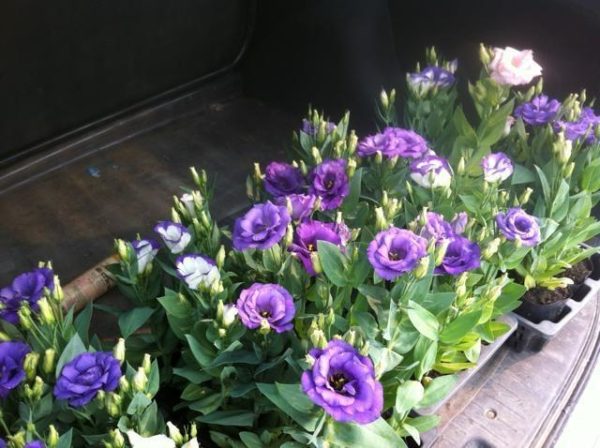

- the time of flowering is affected by the date of sowing, as well as planting seedlings in another place. When the temperature drops, it is recommended to cover the root system with something. A sudden change in temperature can lead not only to delayed flowering, but also to the death of the plant.
- preparation of the flower for the winter period should be carried out at the end of summer. There are plant species that are quite capable of living in low temperature conditions. An important rule is proper care and maintenance of their lives.
- in the event that the flowering ended ahead of time, one more appearance of flowers can be provoked. In this case, you need to get rid of all sluggish buds. After 1.5-2 months, the formation of a new dissolution of the plant is possible.
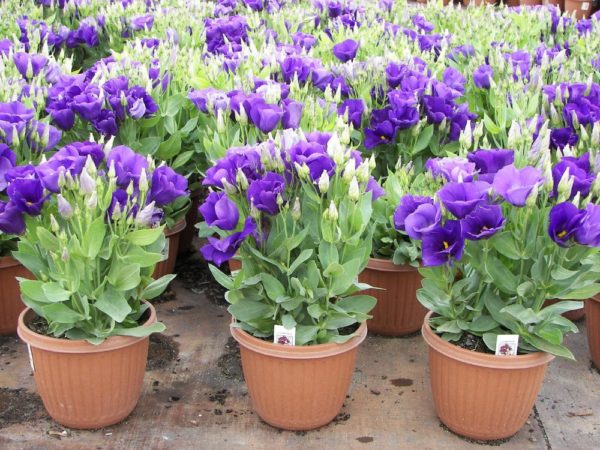

- experienced florists know that there are plants that are watered only in the pallet, and there are those that are on top of the container. As for the eustoma, it is watered exclusively from below. The land needs to be improved and a favorable environment for the life of a flower to be created. You can overlay the top layer with small stones at least 2 cm thick. Excessive moisture destroys the flower, you must be sure to monitor this.
Important! All the advice received on the care of eustoma and growing from seeds at home should be used rationally, taking into account the individual characteristics of the flower. How and when to sow the shoots is of great importance for the further life of the plant.
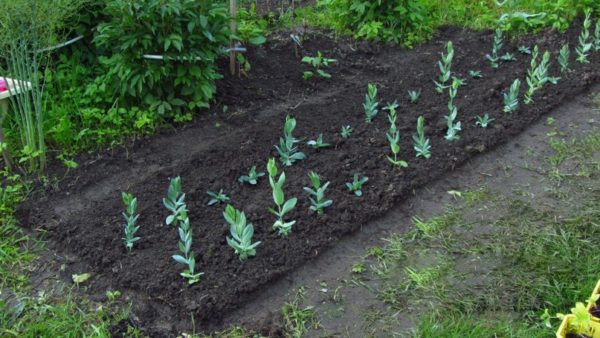

The cultivation of eustoma for subsequent sale takes place under certain conditions according to the corresponding principle. Careful attention should be paid to moisture and fertilization. In greenhouse conditions, you can create a suitable temperature regime, adjust the process of watering the plant and adjust the level of soil moisture. To grow a new generation of flowers, old stems must be cut to the base of the root system.

